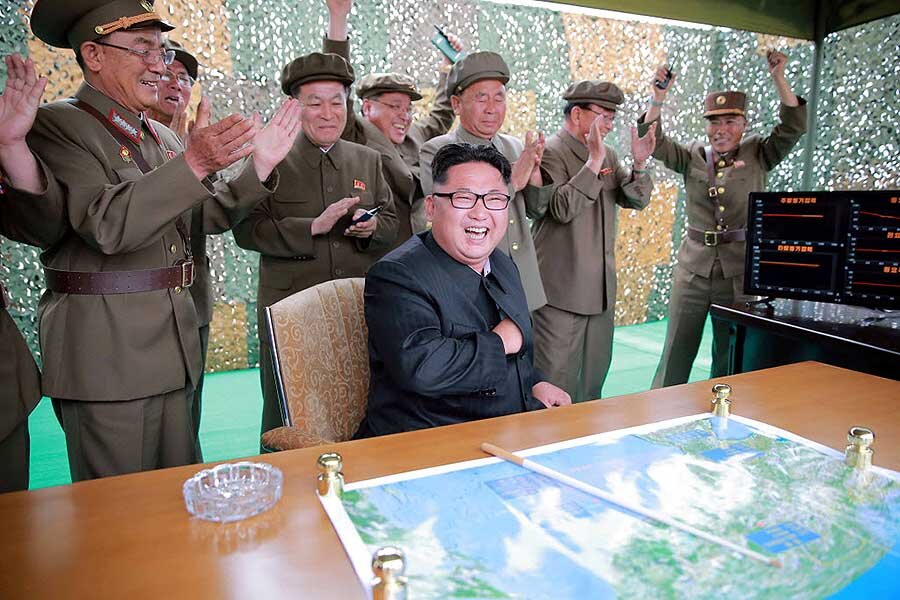Why Japan is wary of North Korea's Musudan missiles
Loading...
A new missile test demonstrates North Korea's potential to attack US interests in the Pacific, the country's official media reported on Thursday, as leader Kim Jong-un celebrated the successful launch of an intermediate-range missile.
The government fired two Musudan missiles on Wednesday, after four previous launch failures since April and one unsuccessful test on Wednesday. The second test propelled a missile more than 870 miles high, and is estimated to have a potential range of more than 2,000 miles, encompassing much of Asia.
Mr. Kim said the launch gives North Korea the "sure capability to attack in an overall practical way the Americans in the Pacific operation theatre," according to the country's official news agency, as Reuters reported.
The missile flew a distance of about 250 miles before landing in the sea. South Korean analysts told The New York Times that the government appeared to have intentionally angled the missile so it would avoid flying over Japan. If it had been launched on normal trajectory, it would have flown the full range of 2,480 miles, the New York Times reported.
Japanese Defense Minister Gen Nakatani said the launch showed North Korea’s threat to Japan was increasing, according to Reuters.
Other experts agreed that the test showed progress for North Korea's military. In April, the country failed in an attempt to launch three other Musudan missiles. Wednesday's first launch attempt also failed, but the second missile was a success.
"We have to see it as a success," Lee Choon Geun, an analyst at South Korea's state-funded Science and Technology Policy Institute, told the Associated Press. "No other (previous) missiles fired by North Korea have ever flown that high."
The launches appear to be a response to US and South Korean military drills completed in the spring, which North Korea claims is practice for an invasion. Kim has said it is essential for North Korea to strengthen its pre-emptive nuclear attack abilities to deal with US threats and continue the development of strategic weapons systems.
The US and South Korea both spoke out against the launch as a violation of UN Security Council resolutions. In March, the Security Council imposed new sanctions, the strongest in two decades, following North Korea's fourth nuclear test in January and a long-range rocket launch in February.
As The Christian Science Monitor’s Peter Ford reported in May, it "remains to be seen" if the North Korean economy can withstand the new sanctions:
Even Pyongyang’s ally, China, voted for those sanctions in March, following North Korea’s fourth nuclear test. But international opprobrium does not appear to be deterring Kim from his goal of making his country an operational nuclear power, with the ability to strike the United States.
He clearly sees such an ability as the surest deterrent against any attempt by the United States or any other nation to effect regime change in Pyongyang; UN sanctions, and even stiffer US sanctions, have not slowed North Korea’s drive for that deterrent.
Andrei Lankov, an analyst of North Korean affairs at Kookmin University in Seoul, told the Monitor that "security comes first, prosperity second" for North Korea.
"Their goal is to have an ICBM capable of hitting targets in the United States and a reliable nuclear warhead," Lankov said. "To do that they will have to test, and test, and test."
This report contains material from the Associated Press






